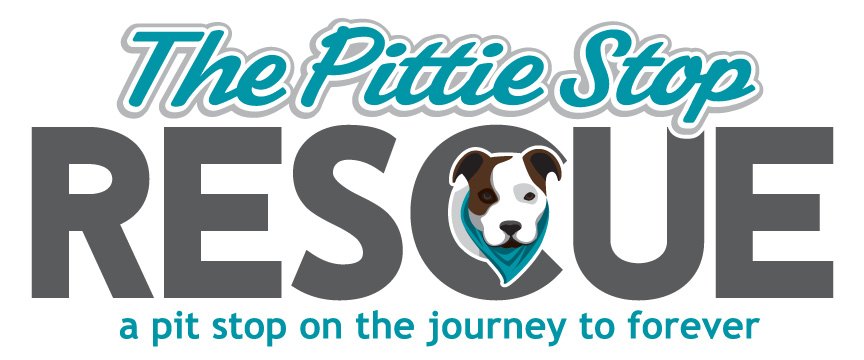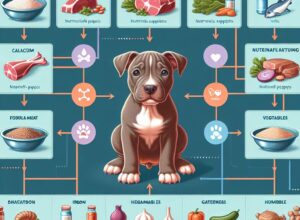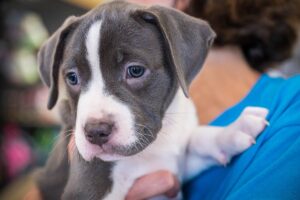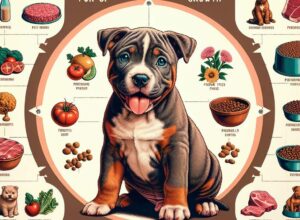
Key Takeaways:
-
Understand that Campylobacter is a common bacterial infection that can affect both puppies and humans, and raw diets can increase the risk.
-
Always source high-quality, fresh meat from reputable suppliers to minimize health risks to your pitbull puppy.
-
Maintain strict hygiene practices when handling raw food to prevent contamination and spread of bacteria.
-
Ensure your pitbull puppy’s diet is balanced and may include supplements to meet their nutritional needs.
-
Regular veterinary check-ups and fecal tests can help catch Campylobacter early and keep your puppy healthy.
Your Pitbull Puppy’s Health: Safeguarding Their Raw Diet
Feeding your pitbull puppy a raw diet can have its benefits, but it’s vital to approach it with care. Campylobacter, a bacteria that causes gastrointestinal upset, is a real concern, especially with raw diets. But don’t worry; by following some simple guidelines, you can significantly reduce the risks and keep your furry friend happy and healthy.
Know the Risks: What Makes Campylobacter a Concern?
First things first, let’s talk about Campylobacter. It’s a bacteria that’s commonly found in poultry and can cause diarrhea, vomiting, and fever in puppies. It’s zoonotic, which means it can be passed from animals to humans, making it a concern for your whole family. The key to minimizing the risk is understanding how it spreads and taking steps to prevent it.
Choosing Quality Raw Ingredients: A Must for Your Pup
The meat you feed your pitbull puppy should be as fresh as possible. That’s why it’s crucial to source it from suppliers who can guarantee its quality. High-quality meat has less chance of harboring harmful bacteria like Campylobacter. Here’s what you should look for:
-
Freshness: The meat should be fresh, without any off-odors or discoloration.
-
Reputation: Choose suppliers with good reviews and high standards for their products.
-
Transparency: Suppliers should be open about where their meat comes from and how it’s processed.
Cleanliness is Key: Best Practices in Food Handling
When you’re handling raw meat for your puppy, think like a chef in a top-notch restaurant. Cleanliness is non-negotiable. Here are some steps to keep in mind:
-
Wash your hands thoroughly with soap and water before and after handling raw meat.
-
Use separate cutting boards and utensils for raw meat to avoid cross-contamination.
-
Clean all surfaces and tools with hot, soapy water after use.
Now, let’s dive deeper into the specifics of safely managing a raw diet for your pitbull puppy.
Safe Storage Solutions for Raw Food
Storing raw food correctly is as important as buying quality meat. Improper storage can turn even the best meat into a breeding ground for bacteria. So, here’s what you should do: learn more about storing raw food for your Pitbull puppy.
-
Keep raw meat in the freezer and only thaw what you need for a meal.
-
Store thawed meat in the refrigerator and use it within a couple of days.
-
Never leave raw meat at room temperature for more than a couple of hours.
Remember, when it comes to storage, think like a food safety inspector and keep things chilled and clean.
Equipment Cleaning: Protecting Your Puppy
Cleaning equipment isn’t just about wiping things down. It’s about making sure that every bowl, utensil, and surface is as clean as possible to protect your puppy from germs.
After every meal, scrub your puppy’s bowls with hot, soapy water or run them through the dishwasher. And don’t forget about the utensils and surfaces you use to prepare their meals. A clean environment means a healthier puppy and a happier you.
Balanced Feeding: Structuring a Nutrient-Rich Raw Diet
A balanced diet is the cornerstone of your pitbull puppy’s health. While raw meat is a great source of protein, your puppy needs a variety of nutrients to grow strong and healthy. This includes bones for calcium, organs for vitamins, and a bit of fruit and veg for fiber.
-
Lean muscle meats for protein and energy
-
Raw bones for calcium and dental health
-
Organ meats for essential vitamins and minerals
-
Fruits and vegetables for fiber and antioxidants
But it’s not just about what you feed; it’s also about how much. Portion control is key to prevent overfeeding and maintain a healthy weight.
The Essentials of Raw Diet Balancing
To ensure your pitbull puppy’s diet is balanced, think about their meals as you would a human’s—variety is essential. Here’s a breakdown:
Most of their diet should be made up of lean meats, with organ meats and bones in smaller quantities. Fruits and veggies should be offered occasionally as a treat. And remember, every puppy is unique, so what works for one may not work for another. Keep an eye on their health and adjust as needed.
Supplements: Are They Necessary?
Even with a well-planned raw diet, your pitbull puppy might need a little extra help. Supplements can ensure they’re getting everything they need. Fish oil for omega-3s, probiotics for gut health, and a multivitamin can all be beneficial. But before you add any supplements, talk to your vet. They can recommend what’s best for your puppy’s individual needs.
Staying Vigilant: Regular Check-ups and Tests
Regular vet visits are your first line of defense against Campylobacter and other health issues. Your vet can help you monitor your puppy’s growth, offer dietary advice, and keep vaccinations up to date. It’s a partnership where your vet’s knowledge and your daily observations come together to keep your pitbull puppy thriving.
The Importance of Veterinary Oversight
Your vet is an invaluable resource when it comes to your puppy’s health. They can help tailor the raw diet to your puppy’s specific needs and monitor them for any signs of nutritional deficiencies or bacterial infections. So, keep up with those check-ups. They’re more than just a routine; they’re a crucial part of your puppy’s health care.
When to Test for Campylobacter
If your puppy is showing signs of gastrointestinal distress, like diarrhea or vomiting, it’s time to call the vet. They might suggest a fecal test to check for Campylobacter or other pathogens. Catching these issues early can make all the difference in treatment and recovery.
By following these guidelines, you’re not just minimizing the risk of Campylobacter; you’re setting the foundation for a lifetime of health and happiness for your pitbull puppy. So, keep up the good work, and remember, when in doubt, reach out to your vet. They’re your ally in this journey.
Feeding With Confidence: Pitbull Puppy Diet Management
Managing your pitbull puppy’s diet doesn’t have to be overwhelming. Stay informed, keep hygiene a priority, and always be observant of your puppy’s health. By doing so, you’ll not only minimize the risk of Campylobacter but also contribute to your puppy’s overall well-being. Remember, a healthy diet is a cornerstone of a healthy life for your pitbull puppy.
Frequently Asked Questions
Here are some common questions pet parents have about managing a raw diet for their pitbull puppies:
What are the first signs of Campylobacter in puppies?
Keep an eye out for symptoms such as diarrhea, which may be bloody, vomiting, and a high fever. If you notice these signs, don’t wait. Contact your vet right away for advice and potential testing.
Can humans get Campylobacter from their pitbull puppies?
Yes, Campylobacter can be transmitted from puppies to humans, especially if proper hygiene practices are not followed. It’s crucial to wash your hands after handling your puppy or their waste and to ensure that raw food is handled safely.
How often should I replace my pitbull’s raw food bowls and utensils?
Food bowls and utensils should be washed after every use. As for replacement, any time you notice cracks, scratches, or damage that could harbor bacteria, it’s time for a new set. Using dishwasher-safe bowls and utensils and running them through a hot cycle is an effective way to keep them sanitized.
What is the safe lifespan of raw meat in a puppy’s diet?
Raw meat should be stored in the freezer and thawed in the refrigerator before use. Once thawed, it should be used within two days. Never leave raw meat out at room temperature for more than two hours.
Are there certain meats I should avoid feeding my pitbull puppy?
It’s best to avoid high-fat meats or those that are heavily processed. Stick with lean cuts and ensure all meat is fresh and sourced from reputable suppliers. Avoid any meat that has been treated with preservatives or colorings.
Feeding your pitbull puppy a raw diet can be a healthy choice if managed correctly. Always prioritize their health by choosing quality ingredients, maintaining strict hygiene, and keeping up with regular vet visits. With these precautions in place, you can enjoy the many benefits of raw feeding while keeping your puppy safe from Campylobacter and other potential risks.



